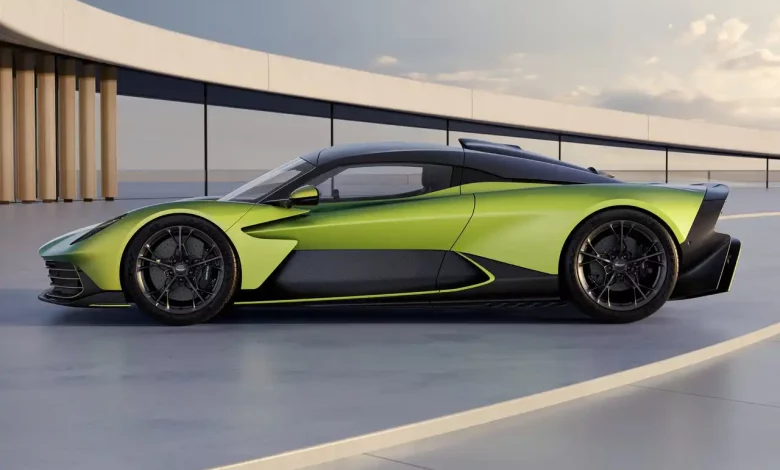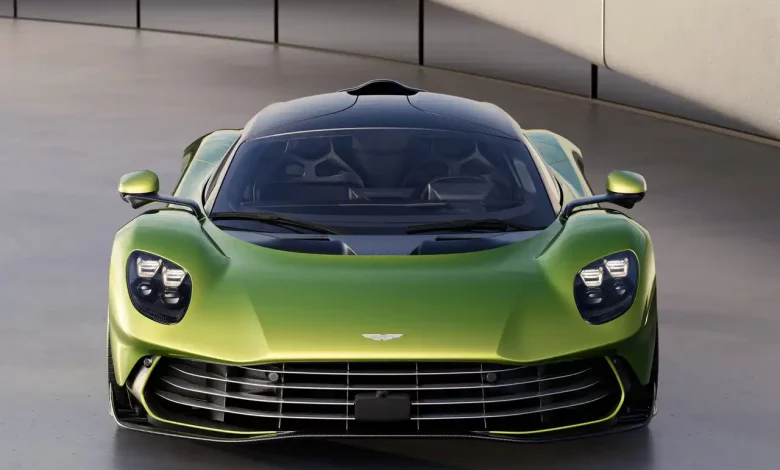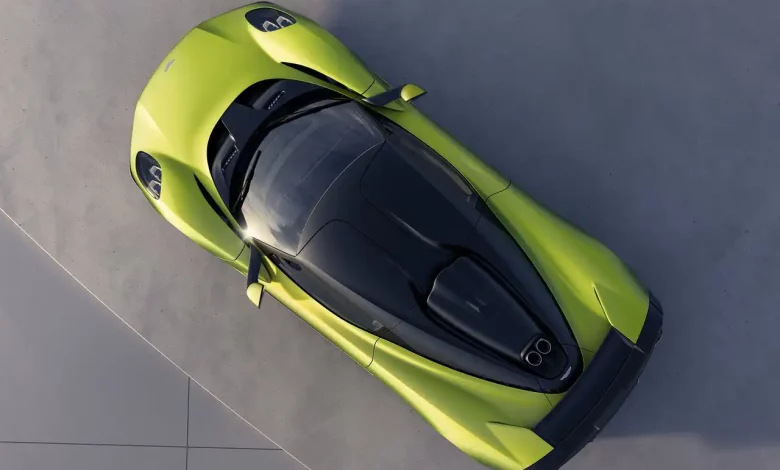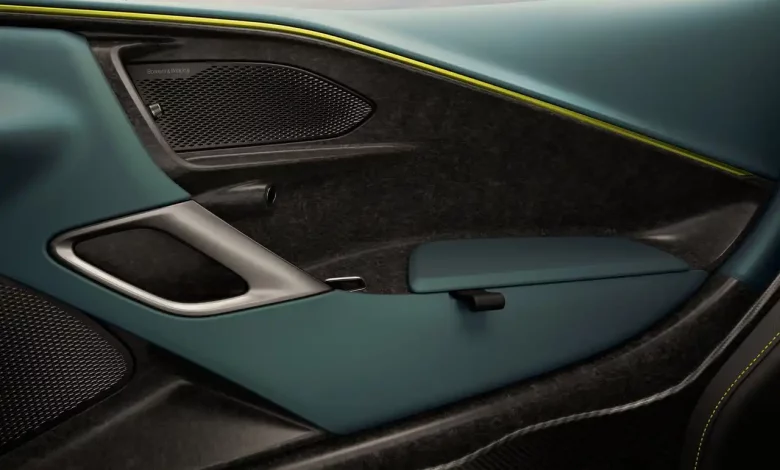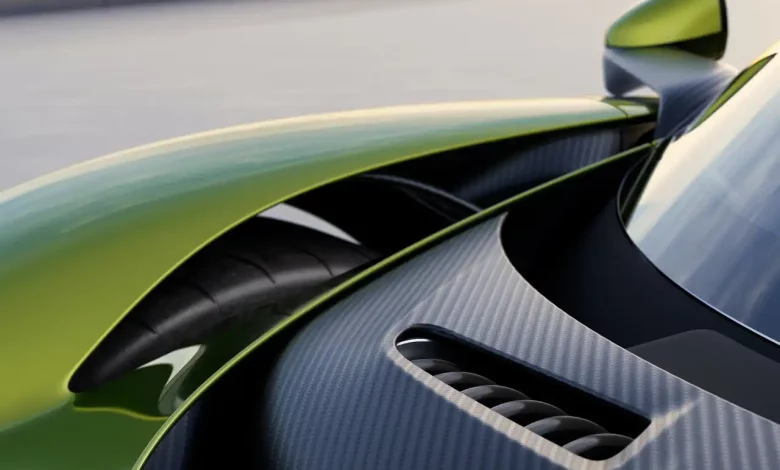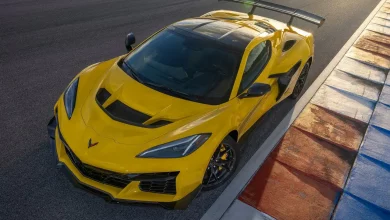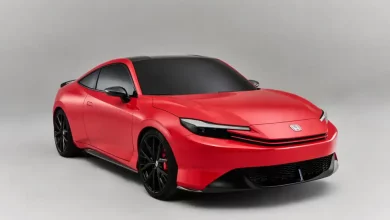By HARJA Published: DEC 12, 2024
Aston Martin’s cars have often been a triumph of style over substance. Yes, they’ve been fast and charismatic, but rarely was an Aston Martin considered to represent the cutting edge of performance technology. Until now. The 2025 Aston Martin Valhalla is a state-of-the-moment mid-engine supercar that will have the folks at Ferrari, Lamborghini, and McLaren checking their rearview mirrors. The Chevy guys, too, because the all-wheel-drive 2025 Aston Martin Valhalla has the same power as the bonkers new Corvette ZR1 but is at least 300 pounds lighter.
The Rundown
The Aston Martin Valhalla is a substantially different car to the AM-RB003 concept that previewed it back in 2019. The AM-RB003, developed with the Red Bull Racing Formula 1 team and its design genius, Adrian Newey (now the managing technical partner of the Aston Martin F1 team), was intended to be powered by an Aston Martin–developed 3.0-liter twin-turbo V-6 engine with a hybrid system like that used on the Newey-designed Aston Martin Valkyrie hypercar. The production Valhalla, however, is a plug-in hybrid whose internal combustion engine is a bespoke flat-plane-crank version of the versatile Mercedes-AMG 4.0-liter twin-turbo V-8, with a pair of bespoke radial-flux permanent-magnet motors powering the front wheels and a third motor built into the car’s eight-speed dual-clutch transmission.
2025 Aston Martin Valhalla: More About the Powertrain
This flat-plane-crank V-8 features new camshafts and exhaust manifolds as well as a pair of roller-bearing twin-scroll turbochargers that pump 20 percent more air than the turbos used on the DBX707 SUV’s engine. The result is 836 horsepower, but the output doesn’t end there. The three motors, fed by a 560-cell high-performance battery that uses a dielectric (non-conductive) liquid to keep it cool, add another 248 hp. Total system output is 1,064 hp and 811 lb-ft of torque. That’s enough grunt, Aston Martin says, to hurl the 3,650-pound Valhalla from 0 to 60 mph in less than 2.5 seconds on the way to an electronically limited top speed of 217 mph. The motors are here mainly for performance and handling, enabling instant-on torque fill and torque vectoring across the front axle, but in EV mode you can drive the Valhalla almost 9 miles using the front motors alone at speeds of up to 80 mph.
2025 Aston Martin Valhalla: What a Body
The 2025 Aston Martin Valhalla’s light weight is courtesy of a carbon-fiber monocoque tub, the lower section of which weighs just 164 pounds. Designed by Aston Martin Performance Technologies, the engineering consulting arm of the Aston Martin F1 team, the tub features aluminum subframes front and rear to locate the front and rear suspension, the front motors, and the internal combustion engine and transmission located behind the cabin. The front suspension is an F1-style pushrod setup with inboard-mounted springs and shocks that enable improved airflow in the front wheelwells. The rear suspension is a five-link system. The shocks are Bilstein DTX adaptive items.
2025 Aston Martin Valhalla: Hit the Brakes
The by-wire braking system combines a mechanical system built around Brembo carbon-ceramic rotors—16.1 inches up front and 15.4 at the rear, the largest rotors ever fitted to a production Aston Martin—clamped by six- and four-piston calipers, respectively, with regenerative braking from the front motors, all modulated by the Valhalla’s integrated vehicle dynamics control system. (The motor in the transmission recoups energy and sends it to the battery when the driver lifts off the throttle.) Standard wheels are forged aluminum pieces, 20 inches up front and 21 at the rear, shod with specially developed 285/30 and 335/35 Michelin Pilot Sport 5 S tires.
Aerodynamic Tricks
The new Valhalla supercar’s mostly carbon-fiber bodywork bristles with the active and passive aerodynamic features you’d expect of an automaker that owns an F1 team. Both the front and rear wings feature active elements controlled by the integrated vehicle dynamics system to increase downforce—and control the balance of the forces acting on the front and rear axles—or reduce drag, as required. The front wing has a cooling bypass function at high speeds, and the rear wing, which can be deployed 10 inches above the rear bodywork, acts as an airbrake under heavy deceleration. Combined with careful management of underfloor airflow, the system develops more than 1,320 pounds of combined downforce, Aston says, and will maintain a consistent downforce level from 149 mph all the way to the car’s 217-mph maximum speed, boosting driver confidence.
Choose Your Personality
The Aston Valhalla’s plethora of electronic systems allow drivers to dramatically adjust the car’s performance and capability. Four driving modes are offered: EV, Sport, Sport+, and Race, with Sport being the default start mode. Race mode deploys the active rear wing and sets the powertrain and suspension to their most aggressive settings. Three levels of stability control—on, Race, and off—adjust the operating parameters of the electric all-wheel-drive distribution, front-axle torque vectoring, regenerative braking, and e-diff systems to vary the level of support given to drivers as each tire approaches the limit of its lateral and longitudinal grip.
What’s Inside
The Valhalla’s interior is much like a race car’s, with lots of exposed carbon fiber, carbon-fiber seats, and a squared-off carbon-fiber steering wheel. The driving position resembles that of an F1 car. But the cabin is a lot plusher than what you find in the screaming Valkyrie: The Valhalla’s Bowers & Wilkins audio system shows you won’t need to wear noise-canceling headphones just to drive it like you do in the Valkyrie. All driver-relevant information is displayed on the screen mounted behind the steering wheel. In Race mode it displays a large, linear tachometer and shift lights; on the road it can be configured to display a full-screen navigation map. The centrally mounted touchscreen activates all the usual functions, such as navigation and audio, but it can also display a graphic showing the PHEV powertrain’s power flows in real time and selectable advanced driver assist modes.
Choose Your Own Valhalla Adventure
If you’re one of the 999 people who buy an Aston Martin Valhalla, you may order your car’s exterior bodywork painted—or with the carbon fiber exposed and finished with a gloss or satin lacquer in clear or with a red, blue, or green tint. The wheels can be finished in liquid titanium silver, textured black matte, or satin black with diamond-turned surfaces. Beyond that, as with all Aston Martins, the Valhalla can be comprehensively customized to suit owners’ tastes, courtesy of Q by Aston Martin, the company’s in-house personalization service.
Aston plans to begin its first Valhalla customer deliveries in the second half of 2025. This car is the fifth all-new or substantially revised Aston Martin the company has launched in the past two years under part owner/executive chairman Lawrence Stroll’s audacious strategy to remake the storied British sports car marque. And Stroll’s team won’t put its feet up for rest over the coming 12 months: In addition to the rollout of the 2025 Aston Martin Valhalla, get ready for the introduction of convertible versions of the new Vantage and Vanquish, plus an upgraded DBX with even more muscle than the snarling 697-hp DBX707.


